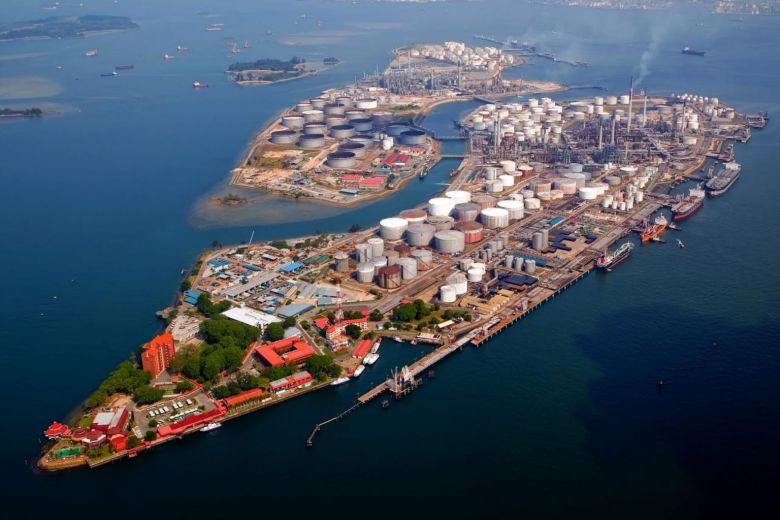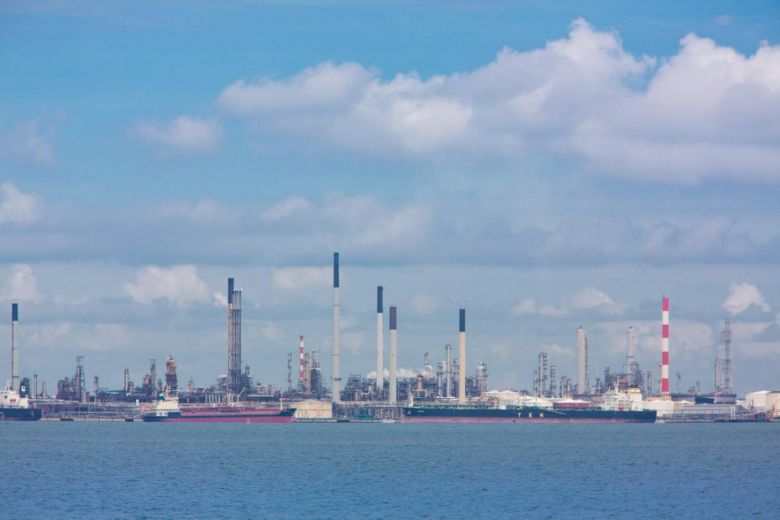Energy giant Royal Dutch Shell has announced a four year pilot project at its Pulau Bukom refinery in Singapore to trial a ‘Digital Twin’ technology. The system, when fully implemented in 2024, is expected to boost productivity while improving reliability and safety. Shell has already implemented a number of digitization technologies that the Digital Twin will run alongside, including 3D printing.

The Digital Twin
The Digital Twin will serve as a complete virtual representation of the refinery and all of its processes, with 3D models aiding visualization. It will allow each physical element on the site to be controlled remotely. With human response times out of the equation, the mechanisms on site will also be able to respond dynamically to changes in conditions in an automated manner.
Shell has stated that it plans to eventually deliver all live plant operation information to its engineers virtually through AR and VR. This may, in time, phase out the need to be on-site altogether – however the company has sought to reassure employees this will not be the case. By 2025, tablets will be used to perform all critical field operations at the Pulau Bukom refinery.
Damian Chan, executive vice-president at the Economic Development Board, states: “We are encouraged that Shell has taken this bold step of piloting the “Digital Twin” solution in Singapore, setting a strong example of how the energy and chemicals sector can adopt technology to move towards Industry 4.0 standards.”
Asia-Pacific’s petrochemical hub
Pulau Bukom Island is a dedicated energy hub in the Asia-Pacific region, with the capacity to process up to 500,000 barrels a day. The site already has an extensive history of piloting technologies such as drones, 3D printing, and AR. Shell alone has 1300 employees stationed at the 59-year-old plant and was the first company to set up a refinery in Singapore.
Naturally, there have been concerns over the automation of certain roles and subsequent redundancies, but Shell has stated that “there is currently no plan to review our manpower needs as a result of the Digital Twin.”
Hugues Bourgogne, Shell’s VP of manufacturing for Singapore/Philippines and GM of the Pulau Bukom manufacturing site, adds: “We are committed to making our Singapore sites on Bukom and Jurong Island globally competitive by combining human capabilities with advanced digitalization technologies, to truly transform the ways we work.”

Keeping up in a digital age
Over the last year, Shell has organized various hackathons and digital boot camps for 140 of its employees to improve digital capabilities and competence on the site. Over the next two years, all of Shell’s Bukom employees will be trained to operate the incoming technology – including management, engineers, and technicians. The company plans to invest more than 6000 training hours a year starting from 2021 in a bid to drive the Digital Twin transformation.
Foreseeing the potential of the Digital Twin, industrial manufacturing company Siemens has also previously made use of the technology. Last year, the firm introduced Sinumerik ONE, a digital native CNC controller with software capable of creating a digital twin. The controller is designed to enable machine manufacturers to generate comprehensive virtual representations of their development and machine processes.
Elsewhere, in defense, the U.S. Army has recently partnered with Wichita State University to create a virtual 3D model of a UH-60L Black Hawk helicopter. By completely disassembling the airframe and components of the helicopter, the researchers have been able to 3D scan each structural part individually to create the digital twin. Once the catalog of components is complete, the Army hopes to 3D print some of the more niche parts that are difficult to source.
The 4th annual 3D Printing Industry Awards are coming up in November 2020 and we need a trophy. To be in with a chance of winning a brand new Craftbot Flow IDEX XL 3D printer, enter the MyMiniFactory trophy design competition here. We’re happy to accept submissions until the 30th of September 2020.
Subscribe to the 3D Printing Industry newsletter for the latest news in additive manufacturing. You can also stay connected by following us on Twitter and liking us on Facebook.
Looking for a career in additive manufacturing? Visit 3D Printing Jobs for a selection of roles in the industry.
Featured image shows Shell’s Pulau Bukom manufacturing site. Photo via Shell Singapore.



